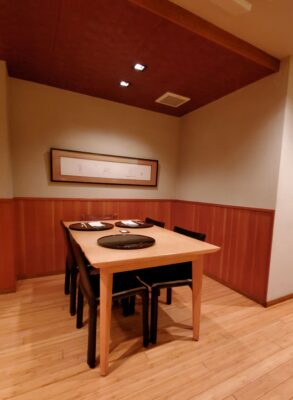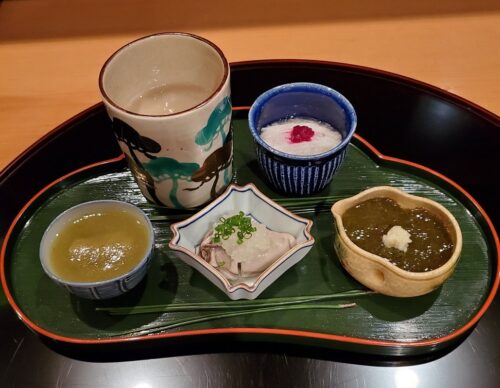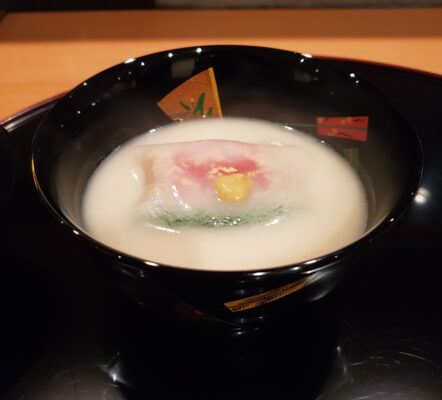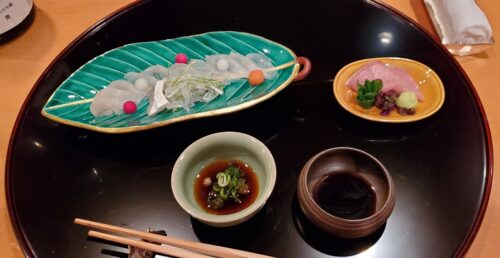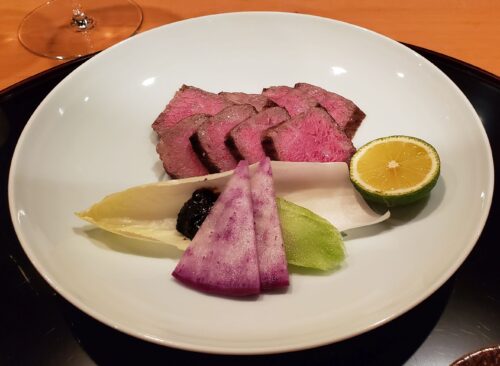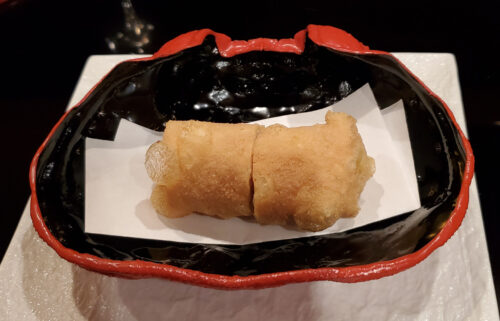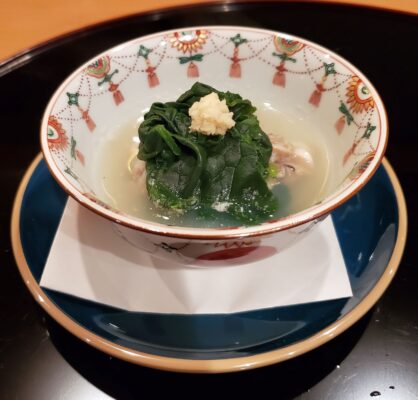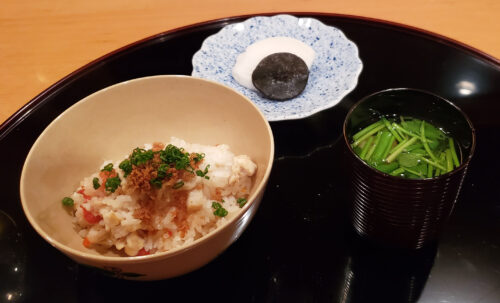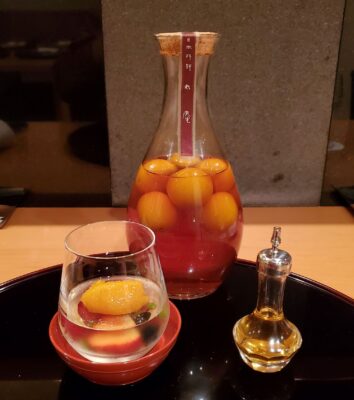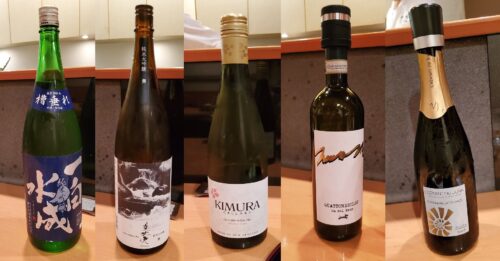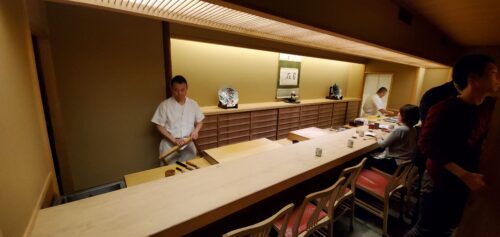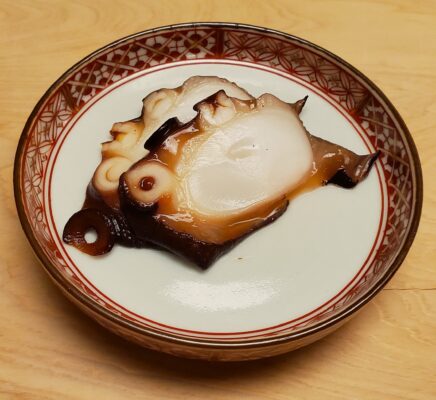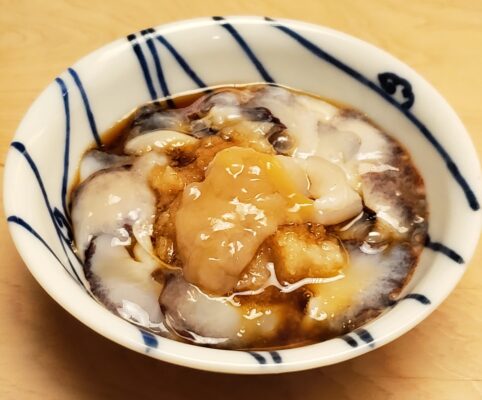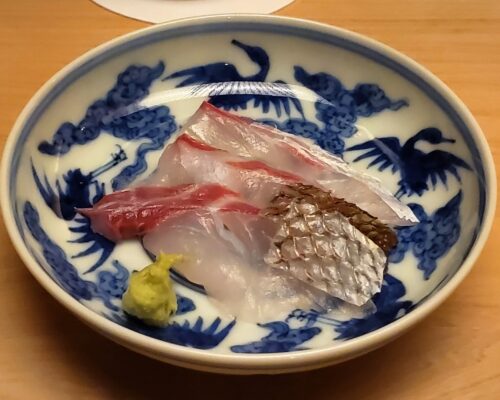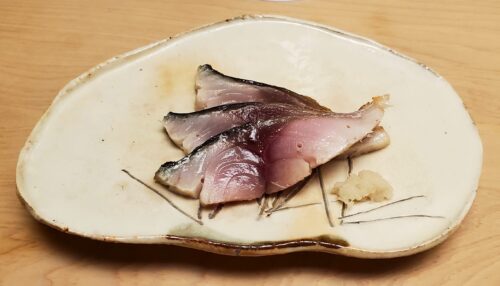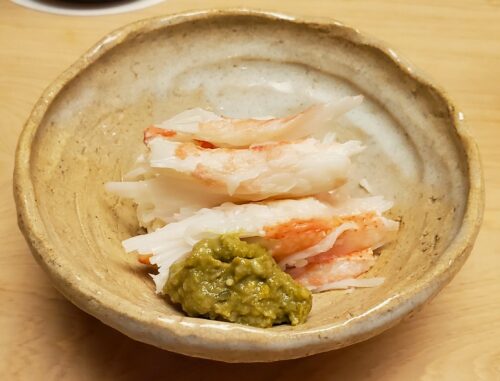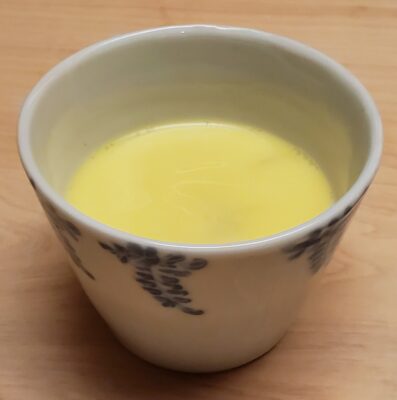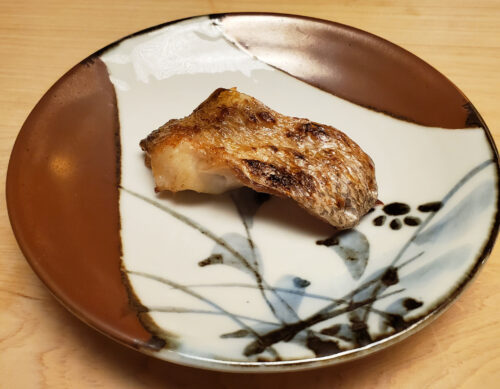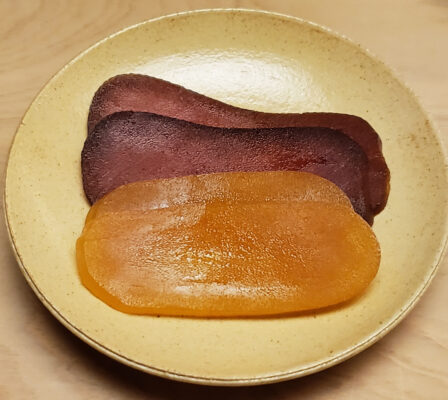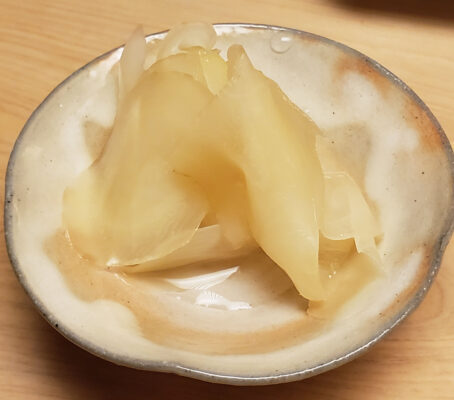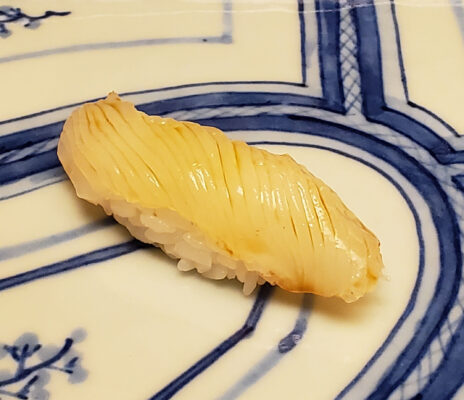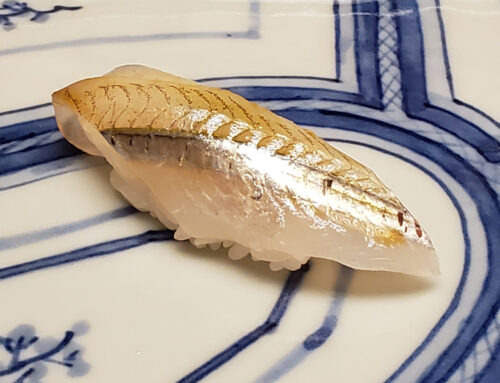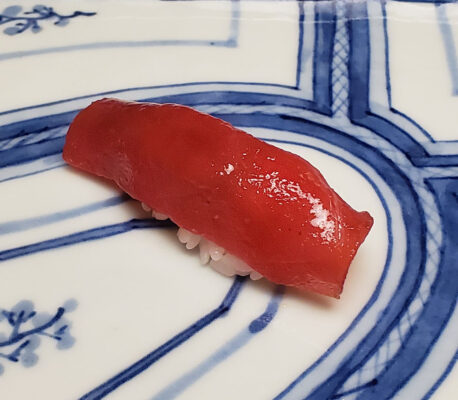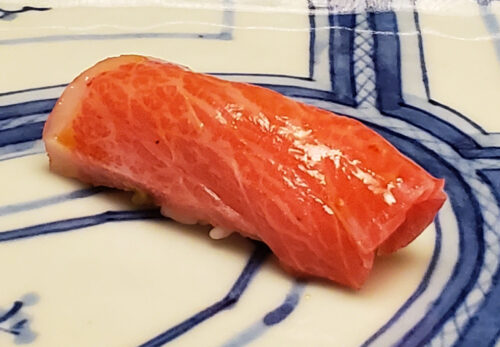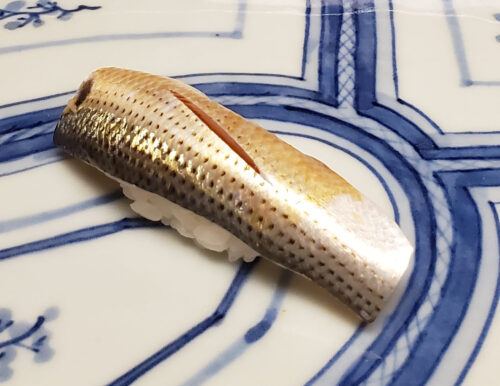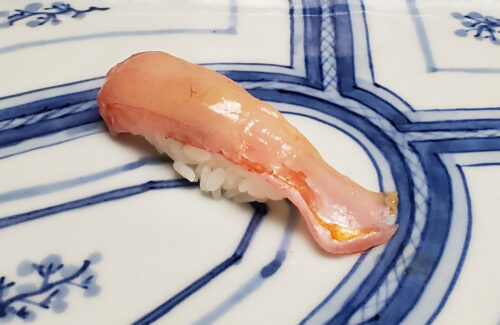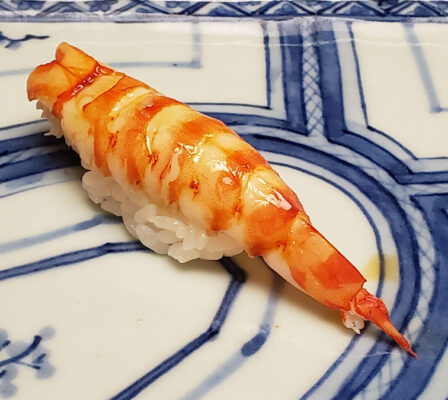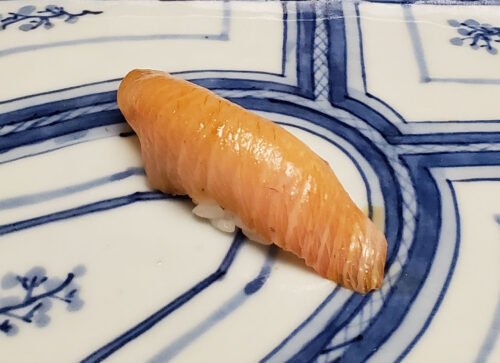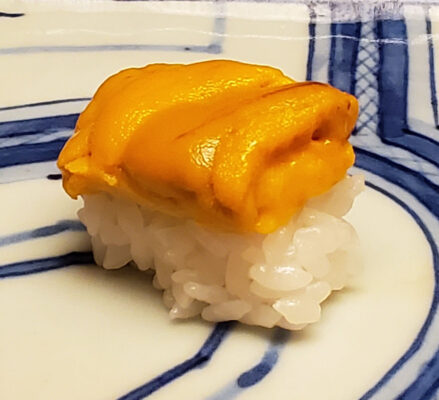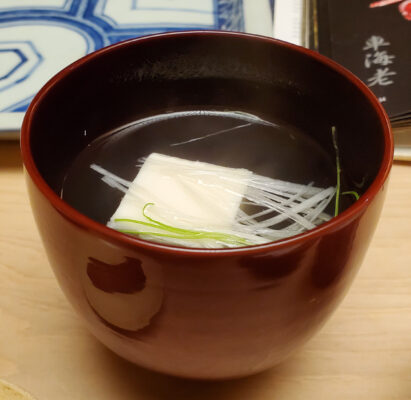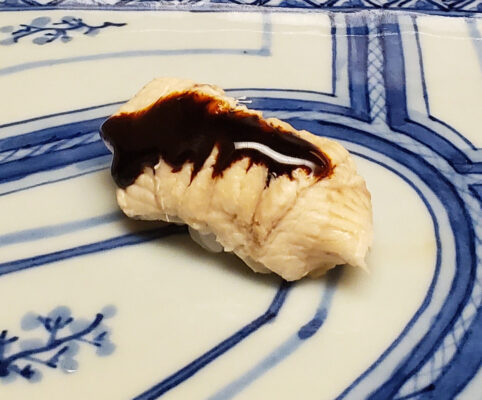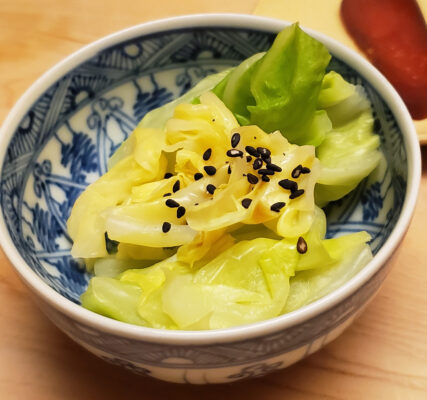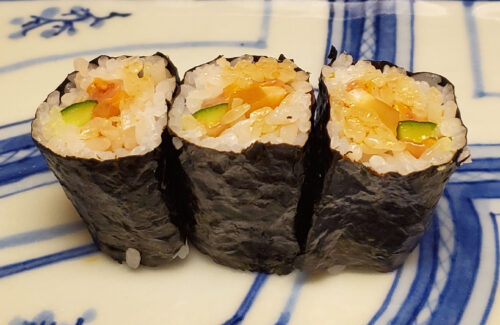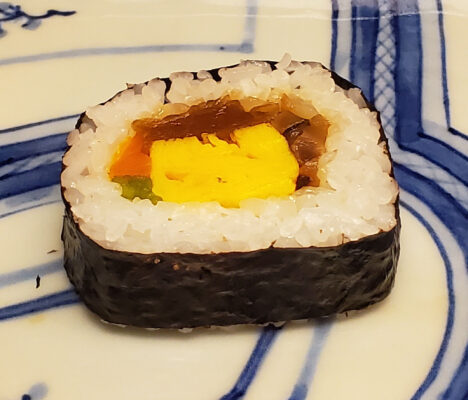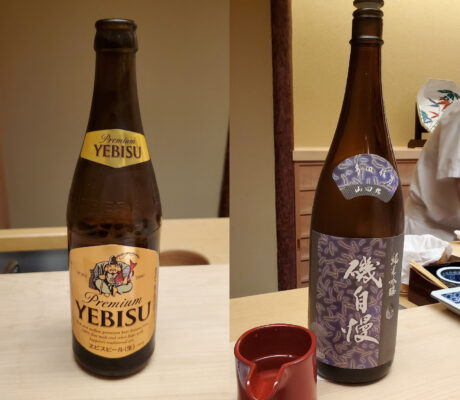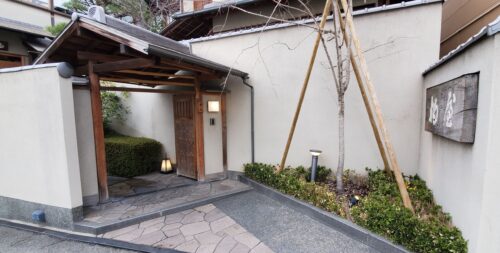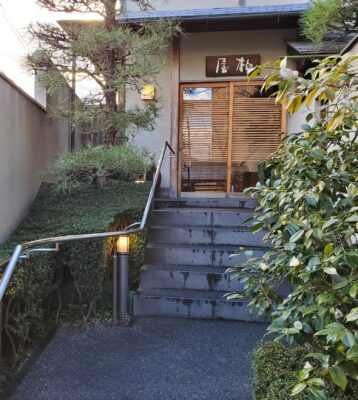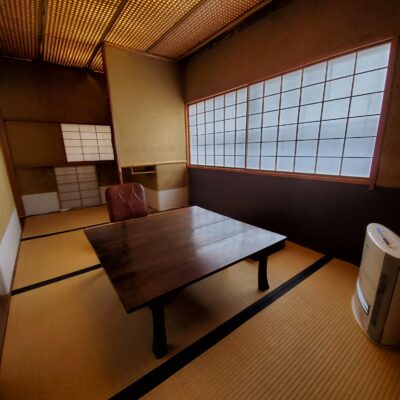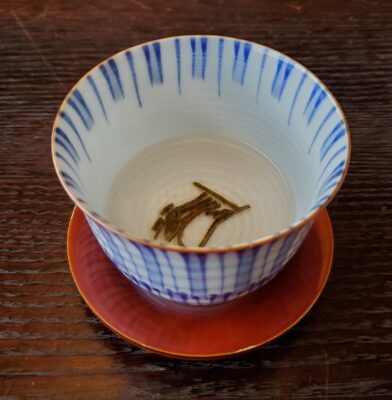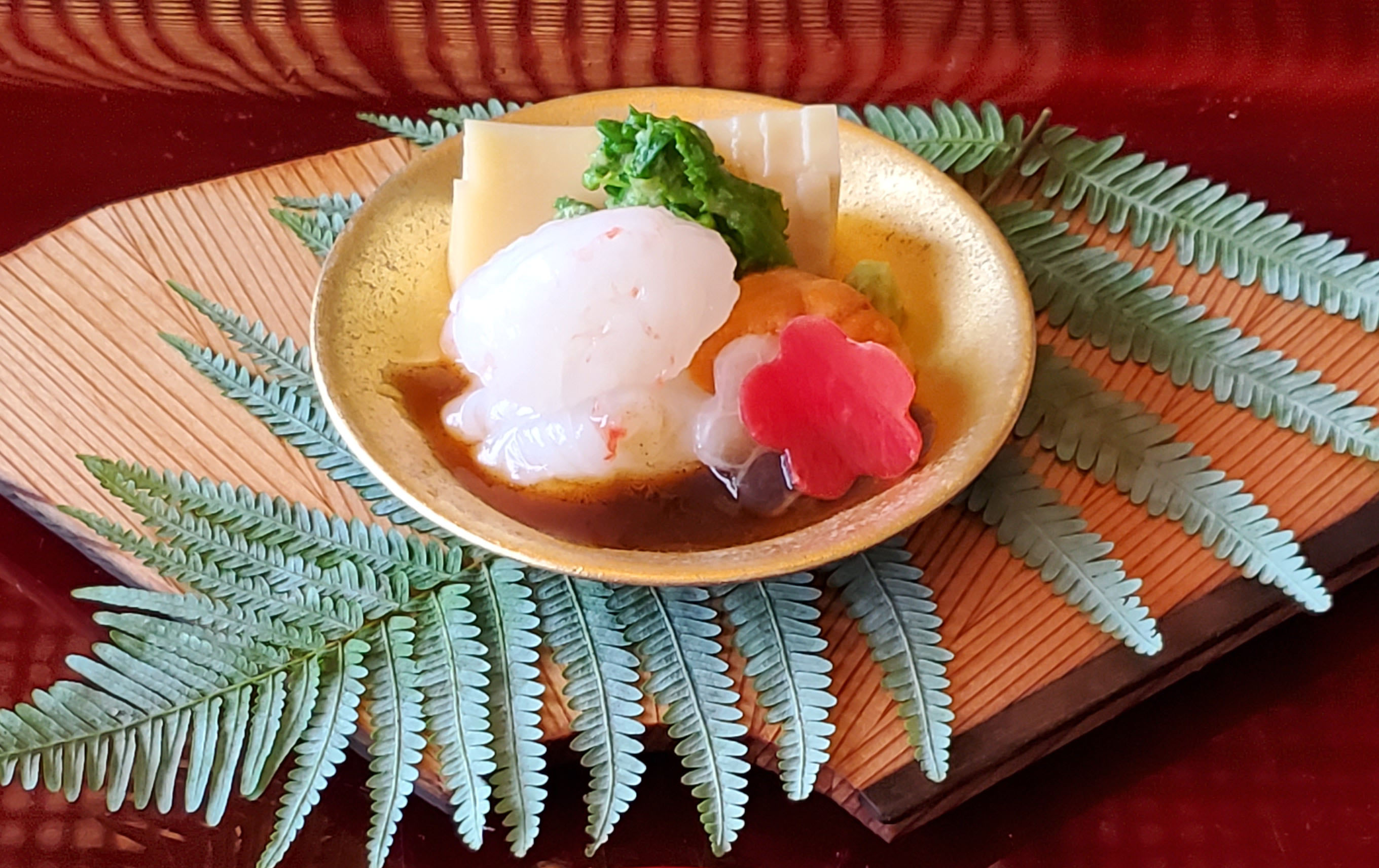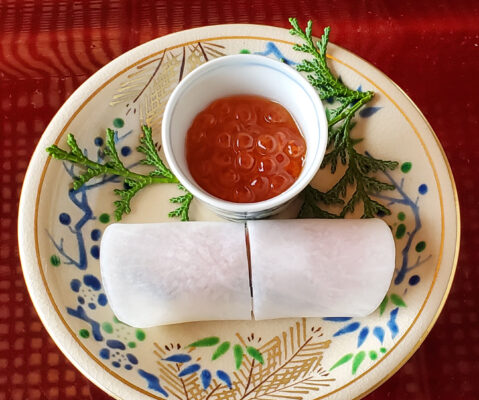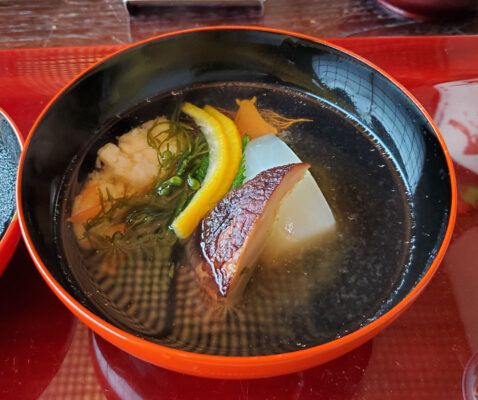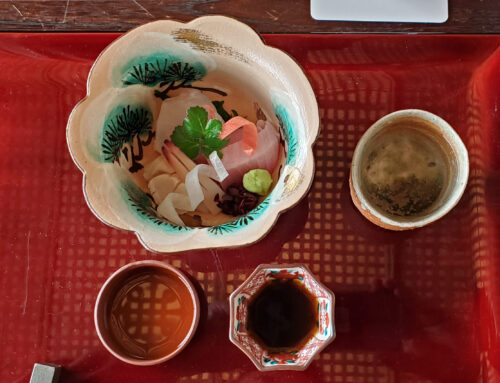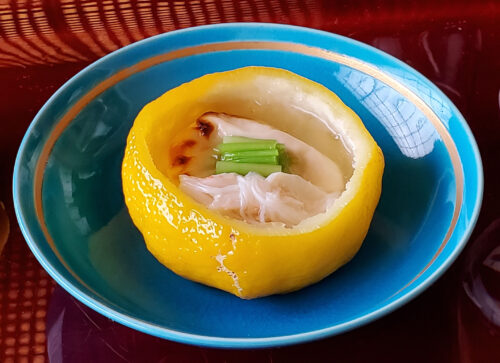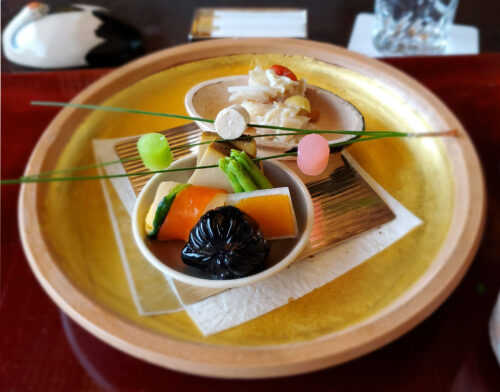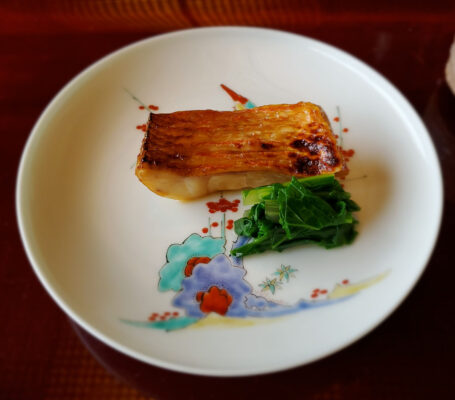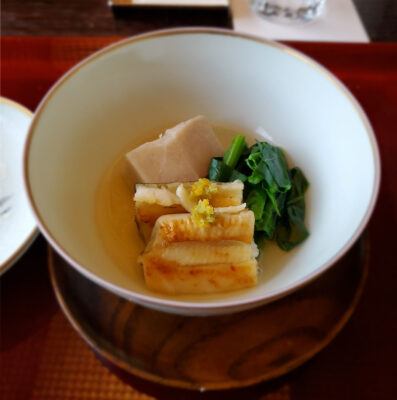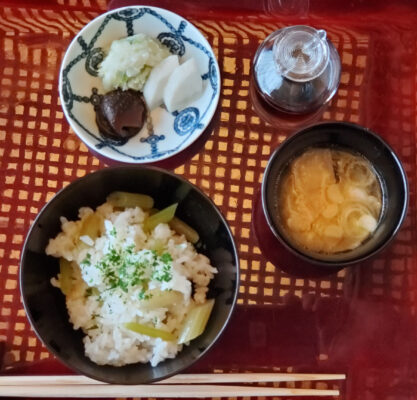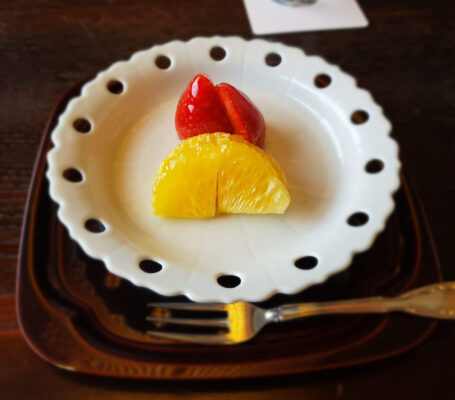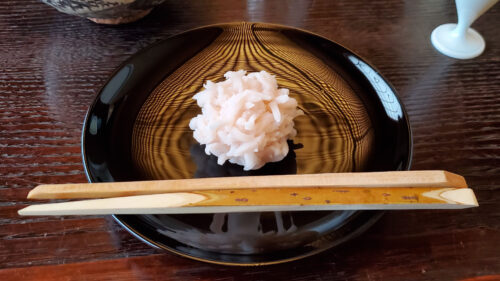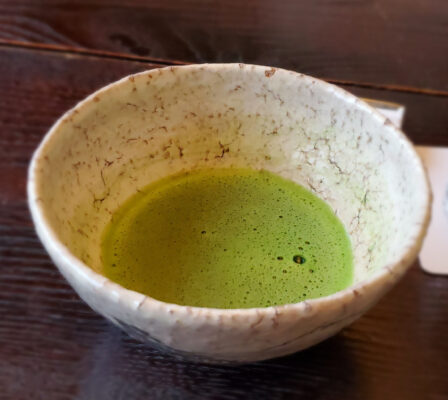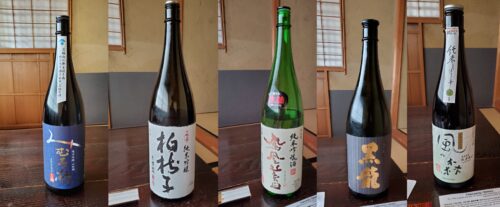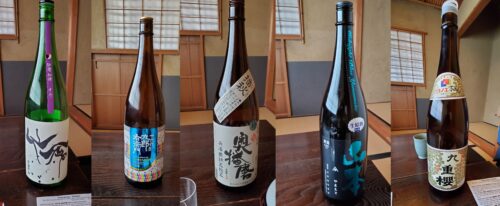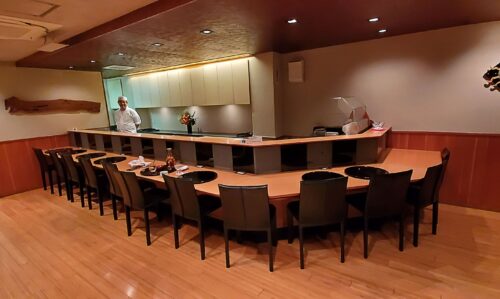
Taian
1-21-2 Shimanouchi, Chuo-ku,
Osaka, 542-0082, Japan
+81 6-6120-0790
In Japan, there are plenty of small restaurants that are independently owned and operated by families. Some have been in the same family for multiple generations. Typically, the husband serves as the chef while the wife manages the front of the house. Osaka’s three Michelin-starred Taian operates in exactly this manner. Chef Hitoshi Takahata, along with his wife who oversees the dining room, owns Taian. Under their watch, the restaurant has held three Michelin stars since 2011. Prior to opening Taian, Chef Takahata spent fifteen years at Ajikitcho, a well-established kaiseki restaurant in Osaka.
Taian boasts a small, intimate space with a long wooden bar that seats about sixteen guests. The interior is simple, creating a relaxed atmosphere akin to dining at someone’s home. On the evening of my visit, I observed a mix of casually dressed Asian tourists in t-shirts and jeans along with locals.
The restaurant exclusively offers a kaiseki meal every evening, which begins with a series of small dishes served simultaneously. The radish soup offers a pleasantly surprising bitterness, while the yam potato noodles provide a nice sweet earthiness. The oysters boast a deep sea essence that pairs wonderfully with the bitterness of the radish, and the seaweed sauce introduces an oceanic vegetal element. What a terrific introduction to the meal.
Next, I enjoyed a white miso soup with tofu, radish mustard, and Japanese tara milt (a delicacy in Japan). The soup has a unique richness derived from the milt, while the tofu adds a bitter spiciness. This was followed by a sashimi course of thinly sliced blowfish and yellowtail, accompanied by white radish, red radish, pepper, and ponzu sauce. While the blowfish offered a subtle, almost flavorless taste, dipping it in ponzu sauce enhanced its flavor with a wonderful citric tang. In contrast, the delicate yellowtail was simply terrific.
I was then served Sanuki wagyu beef with salt and pepper, ponzu, honey miso, and chicken miso sauce. This rare breed of cows from Kagawa prefecture boasts a unique flavor derived from being mainly fed olive branches. The beef was grilled to perfection, juicy, and had the perfect pinkness to it. Dipping the beef in different sauces and salt and pepper provided a variety of flavors, although I preferred it as is due to its already rich flavor.
Following this, I enjoyed deep-fried yuba with crab, served piping hot. The fried yuba was extra crunchy and served as the perfect vessel for the tasty crab filling. Although visually simple, the dish was incredibly satisfying. This was followed by another soup dish of spinach and clams with katsu broth. The broth was extremely flavorful and complemented the strong oceanic taste of the clams. Topped off with blanched spinach and shaved ginger, the duo added another layer of bitterness and a gingery spice.
The final savory course was a rice dish made with fugu fish accompanied by a small cup of clear fish broth. The rice had a terrific fish taste, while the broth boasted a sharp seafood flavor.
For dessert, I was served a glass of Japanese fruits with brandy jelly and orange liqueur. This offered an interesting fruity flavor with a hint of zest, and the sweet alcoholic jelly helped bind all the elements together.
Taian’s kaiseki was wonderful, with flavors slightly bolder than other kaiseki meals I’ve had in Japan. The dishes were simple yet perfectly executed, featuring top-tier ingredients. Despite occasional repetition of certain ingredients in the kaiseki, Chef Takahata showcased remarkable skill in seamlessly integrating them with other components on the plate.The beverage pairing, which included a blend of sake, European, and Australian wines, elevated the dining experience, perfectly complementing each bite.
During my visit, Chef Takahata was behind the counter, personally preparing each plate and engaging with guests alongside his chefs. His wife warmly greeted guests upon their arrival, setting a welcoming tone for the evening. Together, they provided warm Japanese hospitality in a relaxed and homey atmosphere.
Beverage Pairing:
In contrast to the opulence often associated with three-Michelin-starred restaurants, Taian stands out with its modest decor and an approachable price point. However, there is no compromise on quality—the food and service are of three-star standards.
Despite extreme online reviews—either love or hate—my visit to Taian was a personal delight. Impressed by every aspect of my dinner, I found Taian to be a highly capable three-Michelin-starred restaurant, likely to surprise and captivate many visitors, as it did for me.

